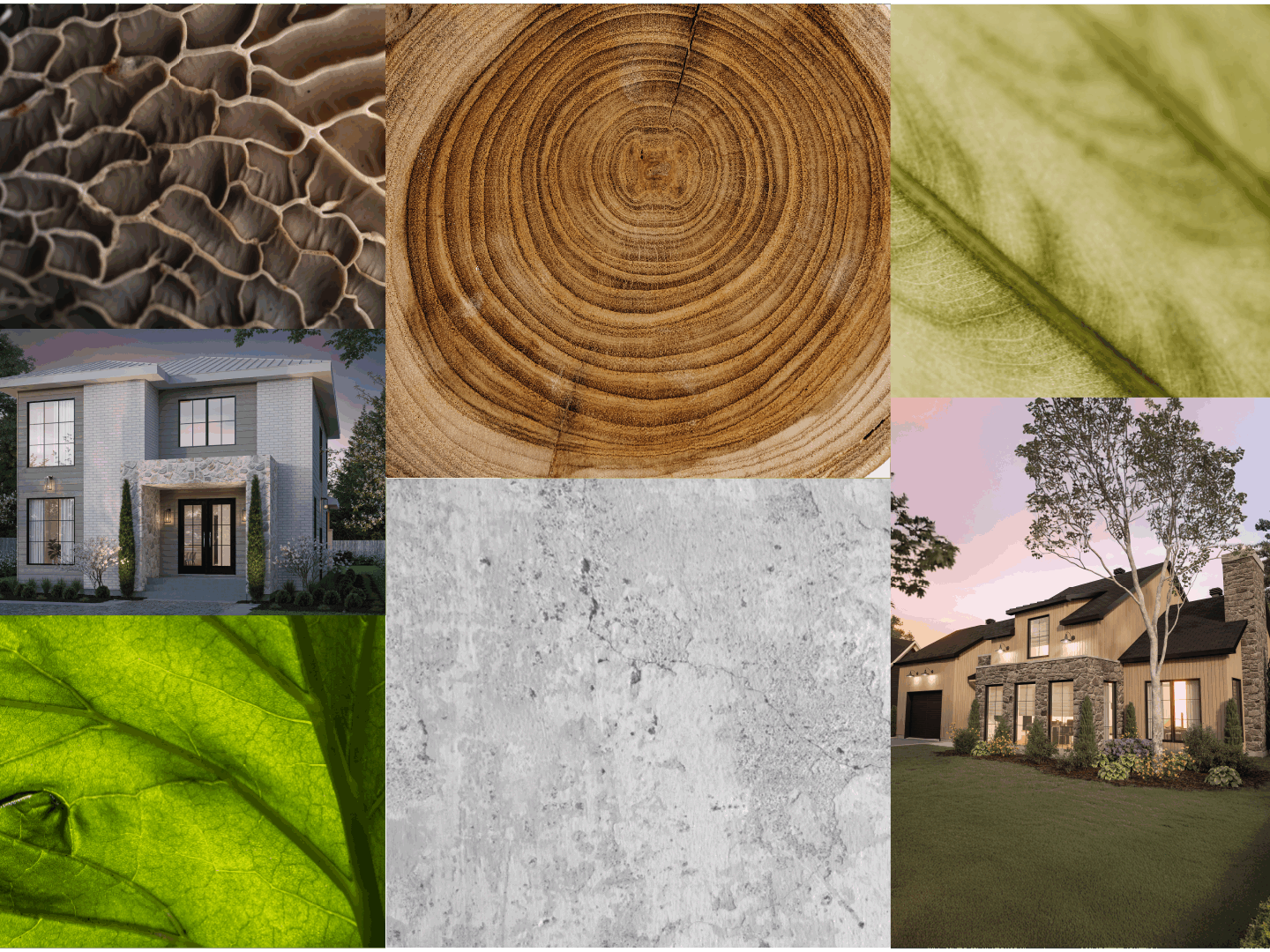Minimalism, raw materials, ergonomics, and a deep connection with nature: organic architecture is winning the hearts of modern home enthusiasts. More than just an aesthetic trend, this architectural style offers a way of living in balance with the environment. Every space is designed to promote comfort, simplicity, and sustainability.
What Is the Organic Architectural Style?
Organic architecture is built on one simple principle: designing homes that blend with nature instead of competing with it. Volumes, materials, and light are carefully balanced to create harmony.
An organic-style home is characterized by:
-
natural and raw materials like wood, stone, and concrete,
-
fluid and ergonomic spaces,
-
a strong indoor-outdoor connection,
-
a modern and minimalist design,
-
a neutral and calming color palette.
Discover this plan
The keys Features of Organic Homes
Raw Materials: Celebrating Authenticity
Solid wood, natural stone, clay, or raw concrete are central elements. These materials are left exposed and celebrated for their textures and imperfections. Their authenticity creates warm, soothing atmospheres that elevate the home’s design.
Ergonomics Designed for People
An organic home emphasizes functional spaces designed for daily life. Circulation is natural, rooms flow into one another, and daylight is maximized. Ergonomics also extend outdoors with terraces, patios, and wide openings that seamlessly connect the house with its surroundings.
A Strong Connection with Nature
Organic architecture adapts to the land and respects its environment. Site orientation, sun exposure, and landscape integration are carefully studied. Architectural shapes—often rounded, curved, or wave-like—draw inspiration from natural forms, giving each home a sculptural uniqueness.
Minimalism Meets Modern Living
Minimalist design is at the heart of the style: clean lines, uncluttered interiors, and functional simplicity. Far from cold or sterile, this minimalism is warmed by natural materials and abundant light, creating inviting and serene spaces.
Neutral Tones for a Calming Atmosphere
Soft colors dominate: off-white, sandy beige, wood tones, and stone gray. This natural palette highlights raw materials and creates a soothing atmosphere ideal for rest and relaxation.
Why Choose Organic Architecture for a Modern Home?
Everyday Comfort
Fluid layouts, optimized light, and natural integration make an organic home pleasant and comfortable to live in.
A Sustainable and Eco-Friendly Choice
By using natural materials, maximizing daylight, and blending with the landscape, organic architecture reduces a home’s ecological footprint while ensuring long-term durability.
A Timeless Aesthetic
Unlike passing trends, the organic style is timeless. Its simple lines, raw textures, and natural inspiration ensure lasting appeal.
Added Value to Your Property
Unique and distinctive, an organic-style house often attracts attention on the real estate market, making it a valuable asset for resale.
How to Incorporate the Organic Style in a New Build or Renovation
You don’t need to start from scratch to embrace organic architecture. Here are a few simple ways:
-
Choose raw, natural materials like wood, stone, and polished concrete.
-
Rethink your color palette with neutral, calming tones.
-
Maximize natural light through larger windows, glass walls, or skylights.
-
Declutter and simplify by highlighting a few strong design elements.
-
Create seamless outdoor connections with large sliding doors, integrated terraces, or garden extensions.
Conclusion: The Organic Style, More Than a Trend
The organic architectural style is more than an aesthetic—it’s a philosophy of living. By blending modern design, minimalism, raw materials, and nature, it creates homes that are eco-friendly, calming, and offers an everyday experience in harmony with nature.





